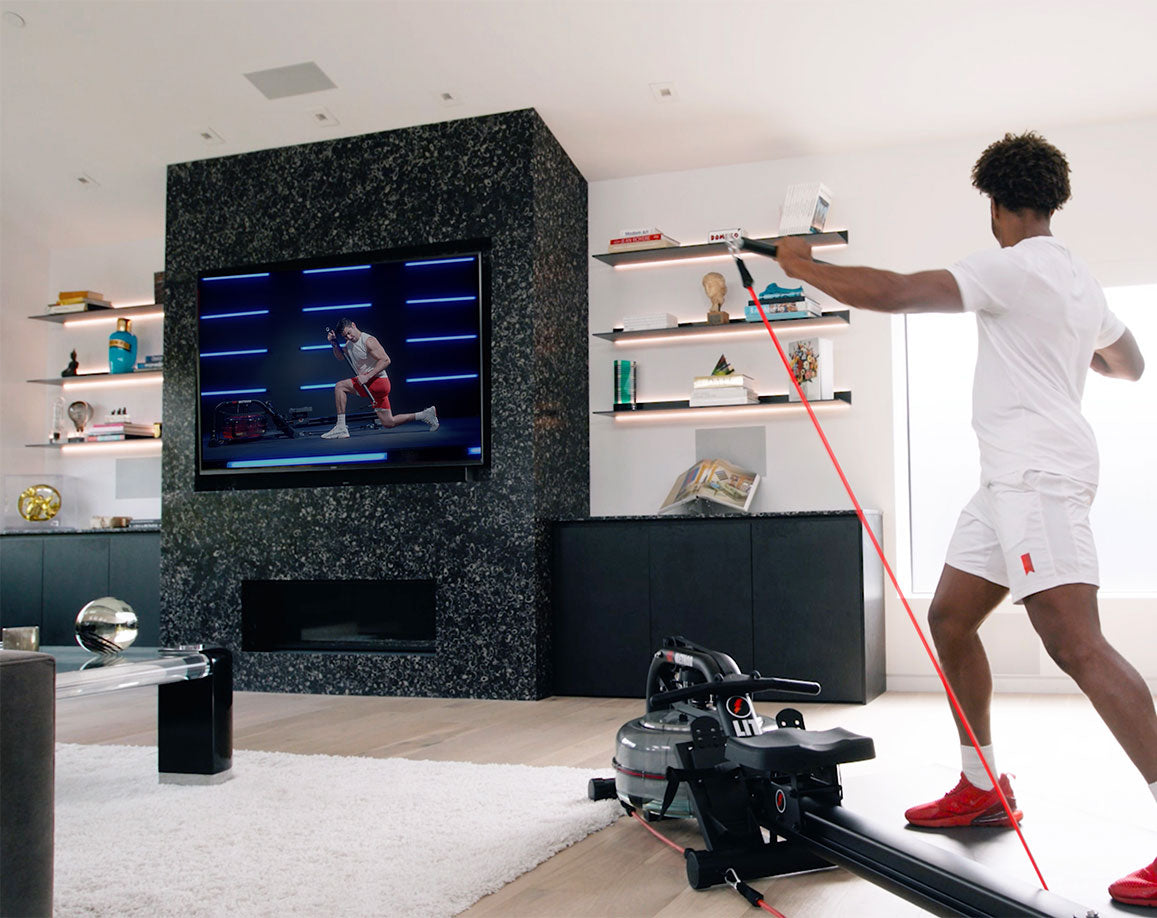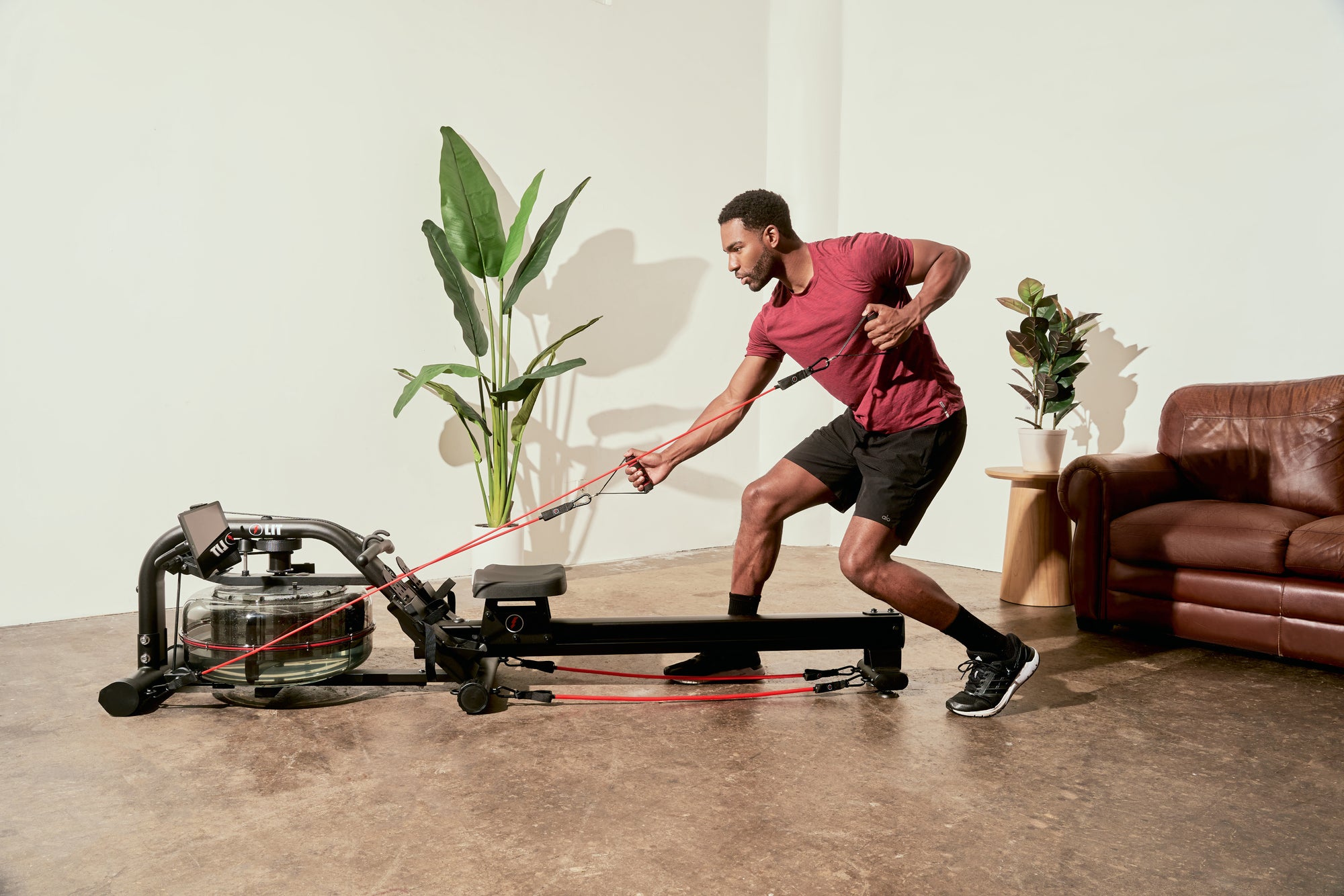Human beings are, by nature, reactive.
Often when it comes to our own health and well-being, we are accustomed to putting ourselves on the back burner. We tend to deal with things once they’ve already become a problem — and not necessarily with the sense of urgency or forethought required to have prevented the issue to begin with.
In fact, over the years, we’ve seen study after study hypothesizing why it is that we can’t seem to act in our own best interest.
At this point, the reasons are familiar — if not predictable:
I can’t right now.
I wouldn’t know where to begin.
I have too much on my plate already.
Unsurprisingly, some of our most common excuses to avoid taking care of ourselves are tied to time — and our perception of it. Over the last year, in one way or another, every one of us has faced an extraordinarily difficult path — one that has challenged, head on, our traditional tendencies for putting our mental and physical health to the side in favor of dealing with other fires at hand.
We know that “the more primitive parts of our brain conspire against our thinking about the future. Our amygdala is designed to be hyper alert to signs of threat, but only immediate threat. At the same time, we’re powerfully pulled to immediate gratification, even if it’s undermining our own long-term well-being.”

Credit: UCLA-Olive View Internal Medicine
But with the world slowing to a halt, we’ve been forced to face our line of reasoning, and to reckon not only with our past, but more importantly with the future and how we intend to navigate it.
Put simply, the pandemic has brought to the forefront the concept of preparation, of being prepared for the next crises that will once again reveal the intersecting needs of climate change, human health and well-being, social justice, and economic reform. They used to call them a once-in-a-century phenomenon — but we know now that these obstacles, these threats to health and longevity — will be frequent, if not relentless.
This means that the way we take care of ourselves matters now more than ever. It also means our understanding of time as it relates to such care has never been more important.
Our signature LIT Method was initially designed as a hybrid of physical therapy and personal training — with a trademarked combination of rowing and resistance bands at the core of the philosophy, and as a response to a growing community of injured clients we knew were in need of alternative, sustainable ways to stay strong.
And while rowing and resistance bands have always played a pivotal role in LIT’s rehab and recovery programming, they are an equally important part of our prehabilitation ideology — or as we affectionately call it, “prehab.”
The choices we make around how we train our bodies must be preventative — and with the singular goal of maintaining one’s quality of life for as long as humanly possible — at the heart of the matter.
That’s what “prehab” means at LIT — a preventative way of training that you can innovate and build upon as your body and your needs change.

Prehab is a preventative approach that takes different modalities from physical therapy, conditioning, and strength training to reduce the risk of injury and improve overall physical capacity.
Prehab is a combination of strength, flexibility, balance and mobility — all designed to help you strengthen specific muscles that will help you avoid future injuries.
Prehab is a proactive, Low Impact Training strategy that helps you identify high risk areas, imbalances, and parts of the body that will benefit from a detailed program focusing on powering and preserving your muscles.
In the American lexicon, we’re all too familiar with the grim mention of the term “pre-existing conditions” and the limits they can place on our lives and livelihood.
In the field of fitness, a pre-existing condition goes by another name as well — a “pre-existing injury.”

The need for us to find innovative and affordable ways for people to treat them and to maintain long term plans for tackling them in the earliest stages and in the most economic ways possible will be the defining purpose of our work at LIT.
Long before COVID-19 ravaged the planet, we were in the LIT LAB prototyping the LIT Strength Machine because we believed that prehabilitation would be the path to a longer, healthier way of life.
The pandemic has only affirmed that belief.
In fact, if the pandemic has taught us anything, it’s that we don’t need to wait for a problem to begin solving one.
We don’t need to wait for a setback before we create solutions that keep our bodies on pace for a better-lived tomorrow.
And with the right community, methodology, and machine, we can build our bodies up before we ever have the opportunity to break them down.
All of our classes are taught with the principles of prehabilitation, but to get a good first look at how this preventative approach works, try our LIT Pilates program this week. You won’t regret it.
Often when it comes to our own health and well-being, we are accustomed to putting ourselves on the back burner. We tend to deal with things once they’ve already become a problem — and not necessarily with the sense of urgency or forethought required to have prevented the issue to begin with.
In fact, over the years, we’ve seen study after study hypothesizing why it is that we can’t seem to act in our own best interest.
At this point, the reasons are familiar — if not predictable:
I can’t right now.
I wouldn’t know where to begin.
I have too much on my plate already.
Unsurprisingly, some of our most common excuses to avoid taking care of ourselves are tied to time — and our perception of it. Over the last year, in one way or another, every one of us has faced an extraordinarily difficult path — one that has challenged, head on, our traditional tendencies for putting our mental and physical health to the side in favor of dealing with other fires at hand.
We know that “the more primitive parts of our brain conspire against our thinking about the future. Our amygdala is designed to be hyper alert to signs of threat, but only immediate threat. At the same time, we’re powerfully pulled to immediate gratification, even if it’s undermining our own long-term well-being.”

Credit: UCLA-Olive View Internal Medicine
But with the world slowing to a halt, we’ve been forced to face our line of reasoning, and to reckon not only with our past, but more importantly with the future and how we intend to navigate it.
Put simply, the pandemic has brought to the forefront the concept of preparation, of being prepared for the next crises that will once again reveal the intersecting needs of climate change, human health and well-being, social justice, and economic reform. They used to call them a once-in-a-century phenomenon — but we know now that these obstacles, these threats to health and longevity — will be frequent, if not relentless.
This means that the way we take care of ourselves matters now more than ever. It also means our understanding of time as it relates to such care has never been more important.
Our signature LIT Method was initially designed as a hybrid of physical therapy and personal training — with a trademarked combination of rowing and resistance bands at the core of the philosophy, and as a response to a growing community of injured clients we knew were in need of alternative, sustainable ways to stay strong.
And while rowing and resistance bands have always played a pivotal role in LIT’s rehab and recovery programming, they are an equally important part of our prehabilitation ideology — or as we affectionately call it, “prehab.”
A PREVENTATIVE APPROACH
The choices we make around how we train our bodies must be preventative — and with the singular goal of maintaining one’s quality of life for as long as humanly possible — at the heart of the matter.
That’s what “prehab” means at LIT — a preventative way of training that you can innovate and build upon as your body and your needs change.

WHAT IS PREHAB & THE PRINCIPLES OF PREHAB
Prehab is a preventative approach that takes different modalities from physical therapy, conditioning, and strength training to reduce the risk of injury and improve overall physical capacity.
Prehab is a combination of strength, flexibility, balance and mobility — all designed to help you strengthen specific muscles that will help you avoid future injuries.
Prehab is a proactive, Low Impact Training strategy that helps you identify high risk areas, imbalances, and parts of the body that will benefit from a detailed program focusing on powering and preserving your muscles.
PROTOTYPING PREHAB FOR THE FUTURE
In the American lexicon, we’re all too familiar with the grim mention of the term “pre-existing conditions” and the limits they can place on our lives and livelihood.
In the field of fitness, a pre-existing condition goes by another name as well — a “pre-existing injury.”

The need for us to find innovative and affordable ways for people to treat them and to maintain long term plans for tackling them in the earliest stages and in the most economic ways possible will be the defining purpose of our work at LIT.
Long before COVID-19 ravaged the planet, we were in the LIT LAB prototyping the LIT Strength Machine because we believed that prehabilitation would be the path to a longer, healthier way of life.
The pandemic has only affirmed that belief.
In fact, if the pandemic has taught us anything, it’s that we don’t need to wait for a problem to begin solving one.
We don’t need to wait for a setback before we create solutions that keep our bodies on pace for a better-lived tomorrow.
And with the right community, methodology, and machine, we can build our bodies up before we ever have the opportunity to break them down.
All of our classes are taught with the principles of prehabilitation, but to get a good first look at how this preventative approach works, try our LIT Pilates program this week. You won’t regret it.




